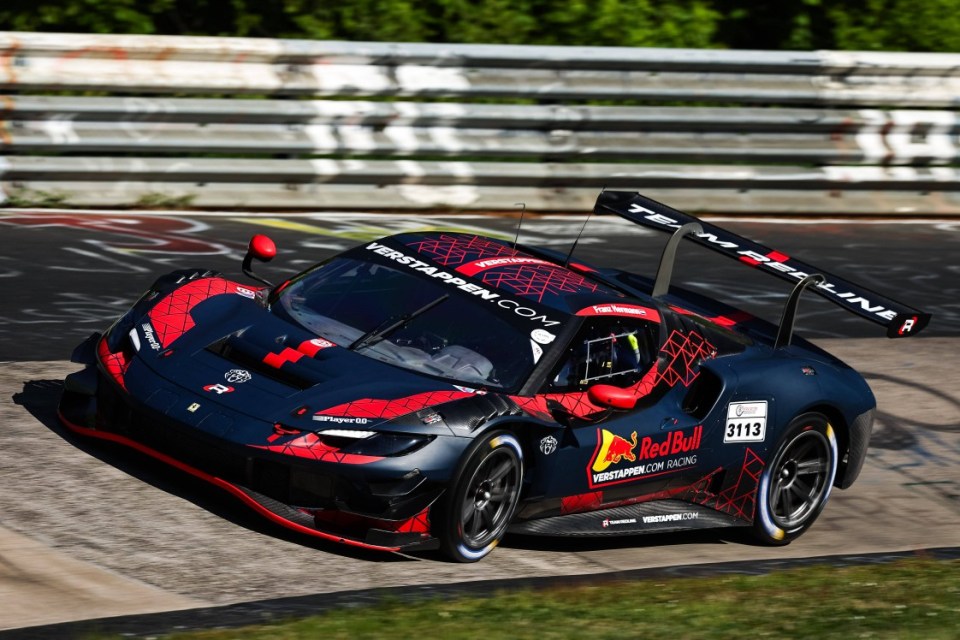In the high-octane world of Formula 1, where champions are forged in milliseconds and strategic gambits, Max Verstappen has carved out a dominion seemingly untouchable. Yet, his latest triumph didn`t unfold on a pristine Grand Prix circuit under the glare of global media, but rather amidst the ancient trees and unforgiving asphalt of the Nürburgring Nordschleife – the legendary “Green Hell.” His recent GT3 endurance race victory there, under a rather unassuming alias, has not merely added another trophy to his burgeoning collection; it has ignited a fresh wave of admiration and intrigue among his F1 rivals, hinting that even the sport`s preeminent talent continues to evolve.
The Green Hell Beckons: A Champion`s Unconventional Detour
For a driver accustomed to the surgical precision and bespoke engineering of Formula 1 machinery, the Nordschleife presents a starkly different beast. This 13-mile, serpent-like track, a former host to the German Grand Prix and the scene of Niki Lauda`s infamous 1976 crash, is a brutal symphony of blind crests, unforgiving cambers, and a dizzying array of corners. It`s less a circuit, more a pilgrimage for those seeking the ultimate driving challenge.
Verstappen, with the unlikely moniker `Franz Hermann,` embarked on this pilgrimage, first testing and then securing his permit in the brief interlude between his dominant F1 victories in Monza and Baku. His weapon of choice? A Ferrari 296 GT3, entered by Emil Frey Racing, piloted alongside sim-racer-turned-real-world-talent Chris Lulham. To win this four-hour Nürburgring Endurance Series race, finishing a commanding 24.5 seconds ahead of the competition, is not just a testament to speed, but to an adaptability that borders on the extraordinary.
“We`ve been preparing for that for a while… just two very nice days,” Verstappen remarked with characteristic understatement. “Racing a bit in the wet, in the dry, just getting more and more experience was nice. And then of course to win it, that`s an extra bonus.”
One might wonder if an F1 champion, already considered by many to be in a league of his own, truly needs an “extra bonus” of experience. But therein lies the essence of true greatness: an unyielding hunger for challenge and an incessant pursuit of mastery, even when others see no further peaks to conquer.
The F1 Paddock`s Verdict: A Sharpened Toolbox
The news of Verstappen`s Nordschleife triumph resonated deeply within the tightly-knit Formula 1 community. His peers, drivers who measure their own worth against his relentless pace, were quick to acknowledge the significance of his extracurricular endeavor. It wasn`t merely a casual outing; it was a profound statement about what it means to be a truly complete racing driver.
Alex Albon, Verstappen`s former teammate at Red Bull, articulated the sentiment perfectly: “There`s a lot to gain from driving different cars, call it a little bit like your `vocabulary.` You read a book, you increase your vocabulary. You drive different cars, you increase what we call our `toolbox.`” This perspective underscores a technical truth: different cars (F1`s high-downforce, lightweight machines versus GT3`s heavier, more robust, and less aerodynamically extreme vehicles) demand diverse techniques, forcing a driver to expand their understanding of grip, balance, and tire management.
Lando Norris of McLaren, often touted as a potential future rival to Verstappen, went further, unequivocally stating: “The fact he can go into any series and be probably the best does show how good he is and how great he is. I`ve said it many times. I think he`s born to be, and will forever be, one of the best ever, if not the best, in Formula 1.” Such high praise, devoid of competitive animosity, speaks volumes about the respect Verstappen commands.

Beyond the Podium: The Unseen Benefits
While Verstappen himself played down the direct impact on his F1 performance – “Does it make me a better driver? I`ve been doing this already for so many years on the simulator, so me doing it now in real life is not very different,” he mused – the consensus among his peers tells a different story. The Nordschleife, with its constantly changing surfaces and weather conditions, demands an almost primal connection between man and machine. It sharpens instincts, refines car control at the limit, and fosters a unique brand of mental fortitude.
Pierre Gasly, another former Red Bull stablemate now at Alpine, expressed an almost boyish excitement, calling the feat “incredible” and confessing a desire to join Verstappen on future such adventures. Even Haas rookie Oliver Bearman, who recognized Verstappen`s teammate Chris Lulham from their karting days, watched the highlights with palpable enthusiasm, particularly a daring overtake on the grass. The Nordschleife isn`t just a race; it`s a spectacle, and for F1 drivers, it represents a pure, unadulterated form of racing that transcends the often-clinical world of Grand Prix weekends.
The Verstappen Paradox: Relentless Pursuit of the Imperfect
It`s an intriguing paradox: the driver who has perfected the art of F1 dominance seeks out the imperfection and unpredictability of the Nordschleife. It`s a statement that his driving is not merely a job, but a lifelong quest for excellence, a continuous expansion of his “vocabulary” in the universal language of speed. In an era often criticized for its sanitized circuits and predictable outcomes, Verstappen`s foray into the “Green Hell” serves as a powerful reminder of the raw passion that still beats at the heart of motorsport.
His victory at the Nordschleife isn`t just a footnote in his illustrious career; it`s a testament to a driving philosophy that continually pushes boundaries, reminding rivals and fans alike that the very best never stop learning, never stop challenging themselves, and perhaps, never truly stop playing. And as Max Verstappen continues to rewrite the record books in Formula 1, one can`t help but wonder what other legendary tracks, under what other cryptic aliases, might secretly beckon him next.

